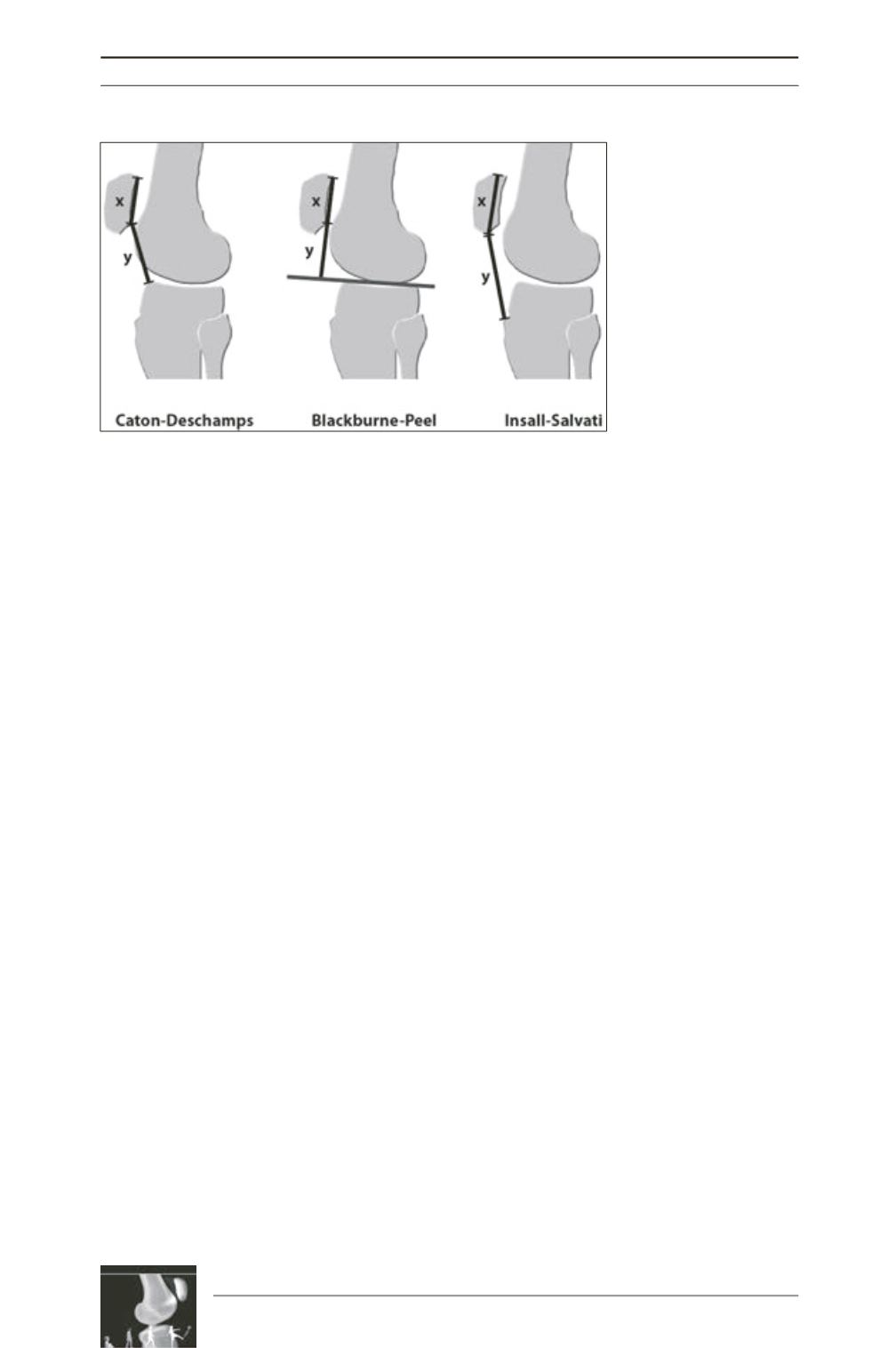

R.A. Magnussen, C. Mayer, E. Servien, G. Demey, M. Jacobi, S. Lustig, P. Neyret
88
Among the population of patients with patella
alta, one encounters a wide variety of patellar
tendon lengths. Previous work has defined an
abnormally long patellar tendon as greater than
52mm in length. We consider a patellar tendon
longer than 52mm in association with patellar
alta in a patient with EPD to be an indication
for combined tibial tubercle distalization and
patellar tendon tenodesis.
It should be noted that while the Caton-
Deschamps index1 is an effective measure of
patellar height, the Insall-Salvati ratio [11] is a
more direct measure of the relative length of
the patellar tendon (fig. 1). Further work may
result in criteria for the performance of
combined tibial tubercle distalization and
patellar tendon tenodesis based on information
obtained from both of these indices, but such
data are currently unavailable.
Case Series of Patients
Treated for Patella
Altaand Elongated
Patellar Tendon
Patients
Between 1996 to 2004, 134 patients underwent
surgery for EPD at our center. Twenty-five of
these patients were treated with distalization of
the tibial tubercle in association with tenodesis
of the patellar tendon into the proximal tibia by
an original technique developed by Philippe
Neyret anddescribed at the
Journées Lyonnaises
de Chirurgie du Genou
in 2002 [22]. The
patients included 9 males and 16 females (6 of
whomunderwent bilateral treatment). Complete
radiographic assessment and clinical follow-up
of at least five years were available for 27 of 31
knees (87%). The average age at surgery was
20.4 years (range 14 to 30 years). All patients
were skeletally mature at the time of surgery
and none had undergone previous surgery on
the index knee. All had a history of at least one
patellar dislocation, symptoms of recurrent
instability (either recurrent dislocation or
subjective feelings of instability limiting
function), and a positive patellar apprehension
test. No patients in the series had severe
trochlear dysplasia or excessive patellar tilt.
Radiographic evaluation included weight-
bearing anteroposterior and lateral views of the
knee and an axial view of the patella with the
knee in 30 degrees of flexion. The height of the
patella was quantified by measurement of both
the Caton-Deschamps index1 and the Insall-
Salvati ratio [11]. Additionally, all patients
underwent a CT scan for measurement of the
tibial tubercle-trochlear groove (TT-TG)
distance. A patellar tendon tenodesis was
performed in association with a tibial tubercle
distalization in all patients with patellar alta
and a tendon length greater than 52mm as
described above. In addition to the distalization,
the tibial tuberosity was also medialized in
patients with a TT-TG greater than 20mm [5].
No other associated procedures were performed
on patients in this series.
Fig. 1: Schematic drawing
of the method of calculation
of the Caton-Deschamps
index (A), the Blackburne-
Peel index (B), and the
Insall-Salvati ratio (C). With
each method, the value is
calculated by dividing the
distance marked as “y” on
the figure by the distance
marked as “x”.











